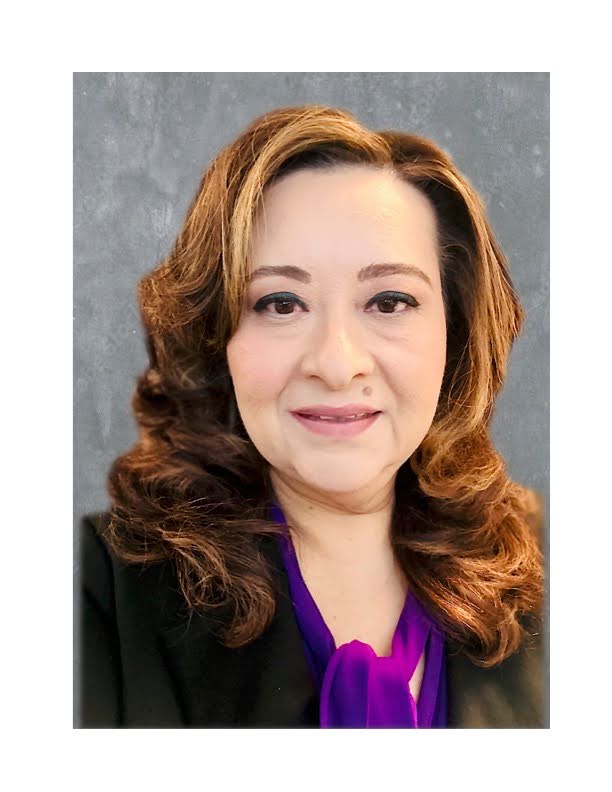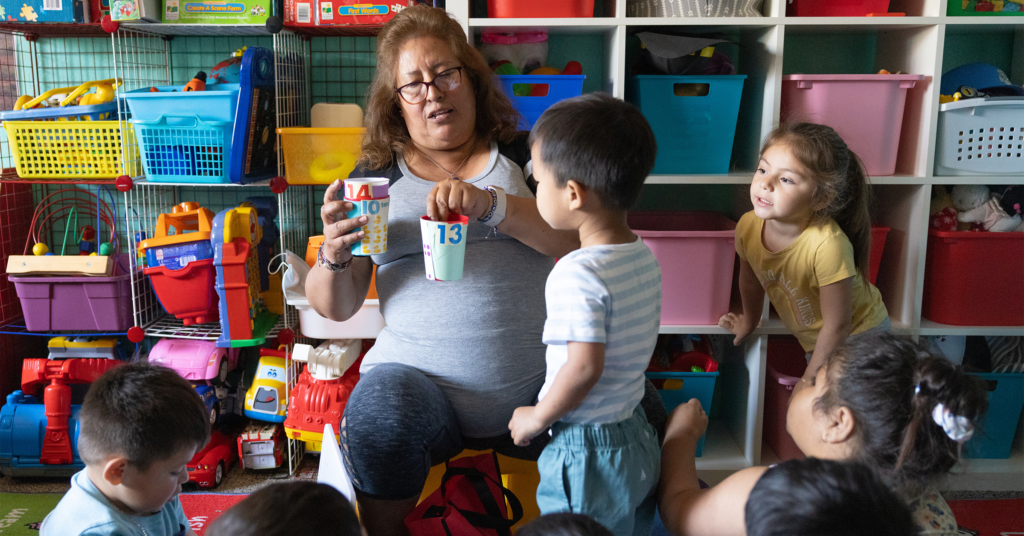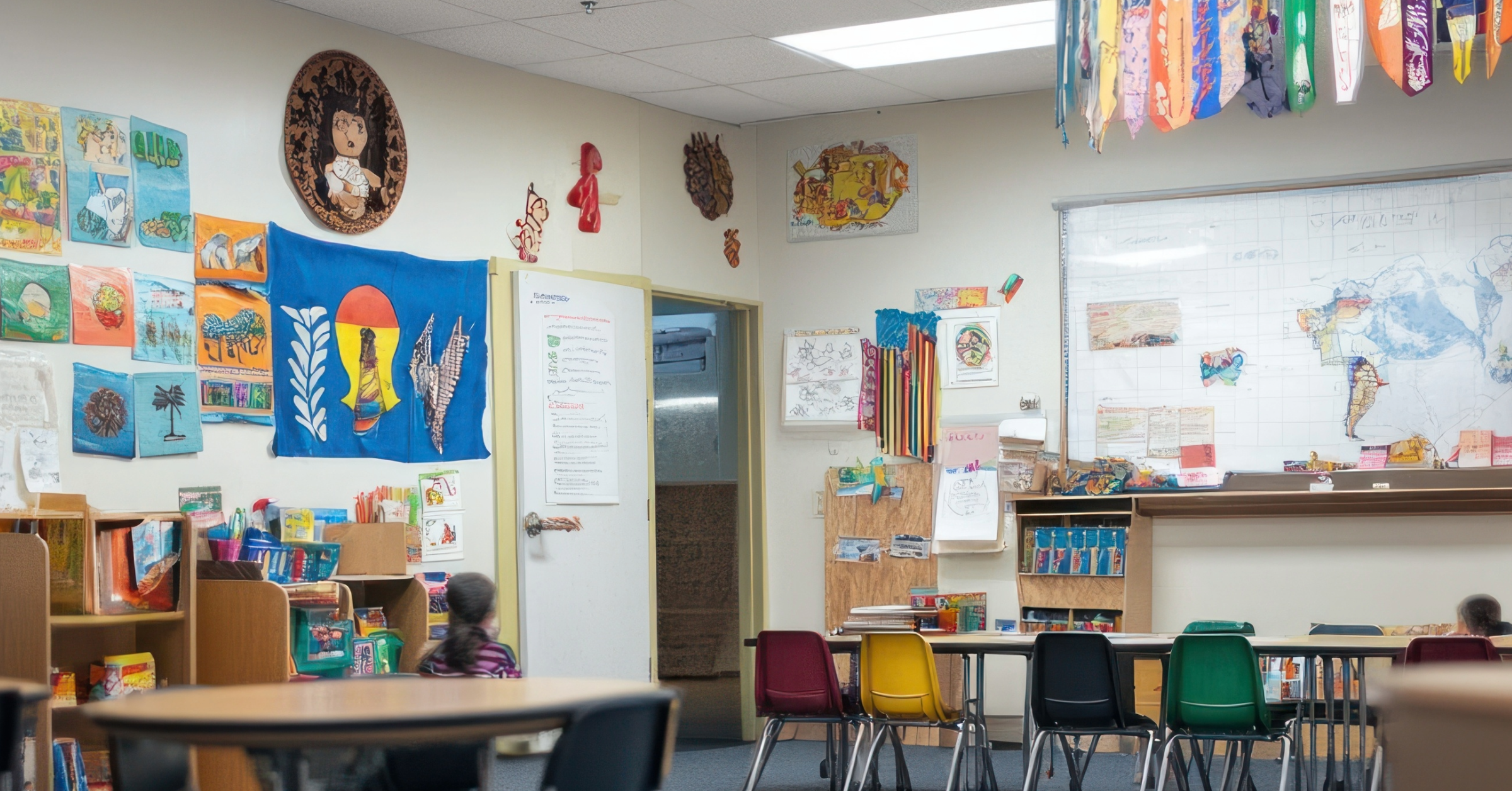
Dr. Nereyda Hurtado has a wealth of experience in the field of Multilingual Learning. As a researcher at Stanford University, she conducted studies on language development and parenting practices with bilingual and Spanish-speaking families in the Bay Area. Transitioning to the nonprofit sector, she developed and opened two separate California State Funded preschool programs in addition to an Infant/Toddler Program, acting as the program supervisor and director for several years.
Nereyda is a certified SEEDS of Learning™ coach and trainer. She holds a double Bachelor of Arts degree in Psychology and Anthropology, and a Ph.D. in Educational Psychology from the University of California, Santa Barbara.
In this blog, Nereyda helps us understand how to set ourselves and our classrooms up to successfully create equitable and welcoming environments for Multilingual Learners.
MLs, ELLs, and DLLs
Multilingual Learners (MLs) is a newer terminology that refers to Dual Language Learners (DLLs) and English Language Learners (ELLs) as a group. Children from birth to age 5 who are learning two or more languages at the same time or are learning a second language while continuing to develop their first (or home) language are categorized as Dual Language Learners (DLLs). English Language Learners (ELLs) are students whose first language is not English but who are learning English.
In the United States, 33% of all children ages 0–8 are Dual Language Learners (DLLs).
The top 5 languages DLLs speak at home are:
Developing an asset-based perspective is essential for educators to recognize the potential of multilingual learners at the very beginning of their school journey. Some of the benefits of communicating in two or more languages is explained in this delightful video by children in the Reay Primary School in South London.
Why is it that in 2023, in many school systems in our country, we treat our English learners as students with deficits—rather than assets in a globally competitive world?
– 12th U.S. Secretary of Education Miguel Cardona
What The Research Says
According to multiple studies of multilingual children and multilingualism, we know that:
- No two Multilingual individuals are alike. Multilingualism is a continuum; it is unlikely two people will have the same knowledge or use of their two languages. There are many societal and individual factors that determine the level of multilingualism a person might develop and how they use their languages.
- Children are capable of learning more than one language at the same time.
- The quantity and quality of children’s exposure or experience in each language is a strong predictor of their skill level in that language.
- Multilingual children are not confused. They are efficient and use whatever linguistic resources they have at their disposal.
- Learning more than one language does not cause language delays.
- Children learn the language(s) they hear. Exposure in each language is a strong predictor of their skill level in that language. How much a multilingual child knows in English or Spanish, for example, greatly depends on how much exposure and interactions they have in English and how much exposure they have to Spanish.
- We can best support dual language development by exposure to high-quality, rich language spoken by native speakers of each language.

Continued multilingual development depends on continued meaningful experiences in both languages. Some children experience language loss through a situation where they learn their home language early on, then go to school and stop learning or using their home language. Continued meaningful experiences in the home language are important to maintain proficiency.
Significant Advantages for Multilingual Learners
We also know that being fluent in more than one language has significant advantages, for example:
- Working memory: Multilingual individuals exhibit greater attentional control capacity compared to monolinguals.
- Inhibitory Control: They also demonstrate enhanced ability to control attention toward relevant versus irrelevant cues.
- Task Switching: Multilinguals show advantages in tasks involving task switching and suppressing interference.
- Memory: Multilinguals have certain memory advantages. For instance, the ability to generalize information from one event to another. This can potentially delay the onset of Alzheimer’s Disease by 4-5 years.
- Metalinguistic Awareness: Multilinguals possess greater metalinguistic awareness compared to monolinguals.
Developmental Stages
Overall, simultaneous bilingual children go through the same general language development milestones as monolingual children. Cooing between one to six months, babbling between four and ten months, incomprehensible or unintelligible speech between nine and twelve months, and speaking their first words at around one year.
Each child is different and there is, of course, wide variability in the skills of monolingual and multilingual children. With that caveat, we generally see that during Year 2, children add two-word phrases, with approximately 20-50 words from all the languages they speak. They are generally understood by others approximately 25% of the time.
A bilingual child at approximately 24 months will use two-word phrases with a 200-300 word vocabulary between all languages. During Year 3, three-word phrases with a vocabulary of approximately 1,000 words can be expected.
Bilingual children can be understood almost 100% of the time during their fourth year, using sentences and engaging in conversation.
“While bilingual children are learning words at the same rate as their monolingual peers, these words are divided across two languages. When you combine their total vocabulary, dual language learners and monolingual toddlers have virtually identical vocabularies.”
https://www.zerotothree.org/resource/dual-language-development-double-the-benefit/
Use of the Home Language is an Asset for MLs
Sometimes parents are discouraged by well-meaning educators to avoid speaking their home language with children. This actually does the child a disservice, denying them the benefit of enriching experiences from another culture that could potentially have an impact on their future learning in school.
According to Allyssa McCabe, Professor Emerita, College of Fine Arts, Humanities and Social Sciences at the University of Massachusetts, Lowell, “The message from academic research is that, at home, smart parents should stick with the language they know best—English will take care of itself in time—and be better as a result.”
Strategies to support MLs in the classroom
- In the classroom, using a child’s home language/s can help them feel more welcomed and comfortable. When educators can find the time to learn and use key words and phrases in a child’s home language it can promote a sense of belonging.
- Culturally relevant teaching aids in the form of posters with labels, word walls, books, and other tangibles incorporate diversity and create a sense of belonging for MLs.
- Color-coded environmental print and labels in the children’s home languages are helpful. Although, we must remember to pay close attention to creating learning spaces that are not overstimulating.
- Use realia, manipulatives, gestures, visual aids/props to introduce new vocabulary words.
- Post the daily schedule including visuals and children’s home languages.
- Songs and chants that incorporate or highlight a child’s home language and English can help instill a source of pride in everyone’s heritage.
- Welcome families to share stories, read books, sing songs, and have conversations in their home language in small groups and/or one-on-one with children in our classroom.
- Invite families to share cultural artifacts, games, rituals, and family photos to incorporate into the classroom environment and learning opportunities.
- Set up cozy areas for children to go to when they need a break from the large group. Consider providing spaces where children can play without needing language. For example, building with blocks, clay, sand and water tables, or puzzles.
- Welcome children translanguaging and using the speech patterns, intonations, and pronunciations that are used in the home and community (such as vernacular, dialects, or Spanglish).
- Streamline directives and messages to adapt to the child’s learning level. In the early stages of learning English keep your sentences simple. Repeat words, use gestures, and include words in the home language whenever possible.
- Seeing and hearing their language, culture, and experiences represented and celebrated in these ways can result in a strengthened sense of identity and a sense of pride in their native culture.

Other Benefits
Significantly, increased empathy and cultural awareness are just two of the potential benefits of having a classroom of multilingual learners. Exposing children early to multiple languages and cultures can inspire a sense of curiosity and respect, paving the way for increased acceptance of differences throughout their lives. Friendships formed between children within the classroom could result in bonds formed between diverse families outside the classroom.
When we value our native languages and cultures…we strengthen America.
– 12th U.S. Secretary of Education Miguel Cardona
Citations:
HHS Public Access Author manuscript PMC 2016 September 13
What Clinicians Need to Know about Bilingual Development
Erika Hoff, Ph.D., Florida Atlantic University, Boca Raton, Florida
Cynthia Core, Ph.D., CCC-SLP The George Washington University, Washington, District of Columbia
Citation:
Hoff, E., & Core, C. (2016). What Clinicians Need to Know about Bilingual Development. Seminars in Speech and Language, 36(2), 89–99. doi: 10.1055/s-0035-1549104.
HHS Public Access Author manuscript PMC 2018 October 02
Bilingualism in the Early Years: What the Science Says
Krista Byers-Heinlein, Assistant Professor in the Department of Psychology at Concordia University
Casey Lew-Williams, Assistant Professor in the Department of Communication Sciences and Disorders at Northwestern University
Citation: Byers-Heinlein, K., & Lew-Williams, C. (2013). Bilingualism in the Early Years: What the Science Says. LEARNing Landscapes, 7(1), 95-112. https://doi.org/10.36510/learnland.v7i1.632
Related Reading:
How Amplifying the Curriculum Supports Multilingual Learners
Quality Interactions in Early Childhood: 5 Essential Building Blocks
